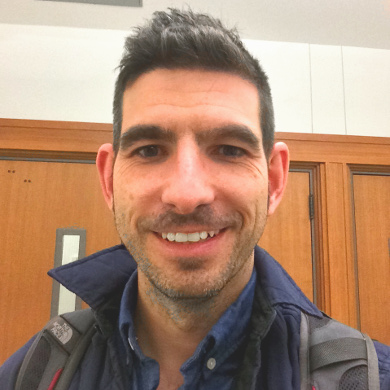John J Robinson
UX/HCI Researcher & Software Engineer

About Me
I'm an experienced mixed-methods UX researcher, with a background in Software Engineering. I've worked on many projects from websites, apps, games, experiments, and consumer electronics. I have a long history of cross-functional collaboration in order to build the best products possible. I conduct research, tell stories, and advocate for users.
I employ mixed-methods research approaches including in-depth interviews, diary studies, usability testing, social network analysis, surveys, and experimental design. I work across teams to understand their questions and assumptions, and develop research questions with them. I communicate research through a broad range of outputs including presentations, articles, visualizations, journey maps, and personas.
I also develop software and tools using a variety of different languages. I've worked at Philips and Microsoft as a software engineer using languages including C, C++, C#, Python, Javascript, and SQL. I've also employed my skills to build research tools, experiments, and data pipelines to collect and manipulate social media data. These have leveraged APIs like those from Twitter, Reddit, and Mechanical Turk to enable a broad range of research across multiple labs.
Here's a small sample of some of my past research projects:
- Facebook Marketplace Journey Mapping - Conducted a diary study and follow-up interviews to better understand the needs and processes of high-volume sellers on Marketplace. I built a journey map, which I then validated with sellers and expanded through follow-up interviews. I also created a slide deck with more information about each phase in the process of selling products and highlighting critical differences from the product. This was used by team to identify tooling gaps for different types of sellers, which our teams used to prioritize future work.
- Understanding Shopping Feature Relevance - I conducted a set of semi-structured interviews, shadowing, and participatory design elements to help understand the qualitative aspects shopping recommendations on Facebook. This provided teams with an understanding of how and why recommendation algorithms can miss, along with what features may be needed to improve them. This resulted in a detailed presentation which helped feed multiple internal orgs in order to build tooling to help improve the ranking recommendations.
- Facebook Shop Payment Challenges - I conducted interviews and remote shadowing with sellers on Facebook to help multiple teams identify and understand issues with the payment system. I worked closely with engineers, management, data science, and design to help identify both bugs and misunderstandings about how the payment systems work. This lead to the prioritization of several new workstreams to address these core challenges. I told these stories through a process map, presentation, and short video clips from the interviews.
- The value of Likes - Summarizing prior internal and external research, I created a presentation to help colleagues understand how users understand and used 'likes'. I helped tell the story of how the Like button has become a form of communication between people, often instead of being an indicator that someone actually enjoys or appreciates a piece of content (eg. people liking content because to show support for friends or ideas even if they don't actually like them). I used this to successfully argue for the use of other buttons that better align with the users' mental models for specific content.
Here's a few quick-response projects, that were less rigorous and focused on aiding quick product decisions (less than 2 weeks turnaround):
- Facebook Shop Naming Survey - I developed a rapid survey to explore favorability of different name variants for the new product. I worked with advertising and content strategy to prioritize the core research questions, developed a survey, and ran it to get quick feedback. This helped choose the name.
- Facebook Shop Retention Study - I developed a short semi-structured interview protocol, conducted interviews, and gave a short presentation to help engineers diagnose and understand a problem they were seeing. This helped the engineers pinpoint rule out some concerns and identify a new issue (load-times) not seen in prior testing.